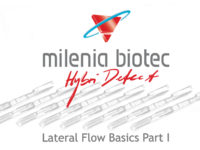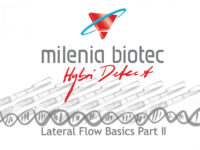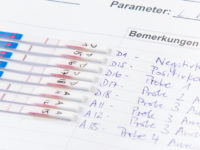Higher temperatures can also be understood as tool in the assay procedure to achieve certain results.

Higher Temperatures: Performance Test
For this reason, Milenia Biotec GmbH took a closer look at this issue: The universal test strips HybriDetect (MGHD1) and HybriDetect 2T (MGHD2 1) were examined under different conditions with dilution series of labelled dsDNA. The purified labelled amplificates were placed into running buffer and warmed to the desired temperature. Test strips were prewarmed as well for 30 minutes. After rewarming Lateral Flow Analysis was initiated. After five minutes signals were documented. The overall results are shown in the following figure.

The results illustrate the robustness of the dipsticks. Even at 65 °C, a sensitive analysis is possible without a visible loss of performance. Nonspecific signal appear over 70°C, especially on the testline 2 of the HybriDetect 2T (red triangles in the figure). This effect is easy to explain. Like most LFD’s the HybriDetect platform includes antibodies. If these antibodies are exposed to temperatures over 70°C, denaturation takes place. This results in non-specific signals.
However, the full functionality of the HybridDetect test strips was demonstrated in the tested range of 20°C to 65 °C. Temperature should be considered as an additional tool in assay development. Try to profit from this feature!




